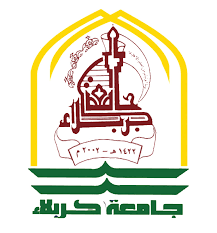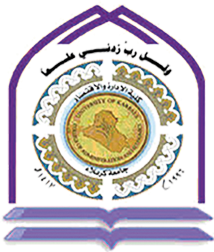اثر العلاقة بين دورة حياة المنظمة والهيكل التنظيمي
الكلمات المفتاحية:
دورة حياة المنظمة، الهيكل التنظيميالملخص
يهدف البحث إلى دراسة اثر العلاقة بين دورة حياة المنظمة (X) والهيكل التنظيمي (X) في الأداء (Y).ومن اجل تحقيق ذلك، تم اعتماد مراحل دورة حياة المنظمة (الولادة، النمو، النضج، والانحدار ) استنادا إلى تقسیم ۱۹۹۱ Hodge & Anthony) (۱۹۹۹ Jones ، وتحديد الهيكل التنظيمي بثلاث أنواع العضوي، المختلط الآلي) من خلال قياس أبعاد الهيكل الثلاثة (الرسمية، المركزية والتعقيد) استنادا إلى (۱۹۹۷:۱۷۰ Hach)، أما فيما يتعلق بالمتغير المعتمد وهو الأداء فقد تم قياسه وفقا للمؤشرات التي حددها أنموذج ( & Kaplan Norton) التي استخدمت في البحث وهي (ROI ، الإنتاجية، نسبة تطويرالأفراد). تم قياس المتغيرين المستقلين دورة حياة المنظمة الهيكل التنظيمي باعتماد استمارة استبانة أعدت لهذا الغرض، فيما تم قياس المتغير المعتمد اعتمادا على البيانات والحسابات الختامية للسنوات (۱۹۹۹ - ۲۰۰۲) و (٢٠٠٤). جرى البحث في القطاع المصرفي العراقي وشمل عينة مكونة من (۱۲) مصرفا منها (٤) حكوميا و (۸) أهليا، وبلغ عدد أفراد العينة (۷۸) مديرا يحتلون مواقع إدارية متقدمة. تم استخدام معامل ارتباط Spearman و اختبار (t) لقياس معنوية العلاقة بين متغيرات الدراسة، واستخدام تحليل الانحدار المتعدد ( Multipl Regression Analysis) وتحليل التباين (ANOVA) واختبار (F) لتحديد معنوية معادلة الانحدار، كذلك تم استخدام (R) لتفسير مقدار تأثير المتغيرين المستقلين في المتغير الستمد. توصل البحث إلى مجموعة من الاستنتاجات منها: - ارتباط كل مرحلة من مراحل دورة حياة المنظمة مع نوع من أنواع الهيكل التنظيمي هو الأكثر ملائمة لمتطلبات تلك المرحلة، وينعكس تأثير هذا -الارتباط في مؤشرات الأداء .٢ - إمكانية تبني المنظمة أنواع معينة من الهيكل التنظيمي في كل مرحلة من دورة حياتها ولكن باختلاف الترتيب بين مرحلة وأخرى وحسب متطلبات تلك المرحلة، ويتضح ذلك من خلال اختلاف تأثير هذه الارتباطات في مؤشرات الأداء. ثم اختتم البحث بمجموعة من التوصيات المتعلقة بمتغيراته الثلاثة، وأخرى تتعلق بالبحوث المستقبلية.
التنزيلات
منشور
كيفية الاقتباس
إصدار
القسم
الرخصة
الحقوق الفكرية (c) 2007 فاضل عباس العامري، اكرم محسن الياسري

هذا العمل مرخص بموجب Creative Commons Attribution-NonCommercial-NoDerivatives 4.0 International License.
يحتفظ المؤلفون بحقوق الطبع والنشر لأوراقهم دون قيود.










